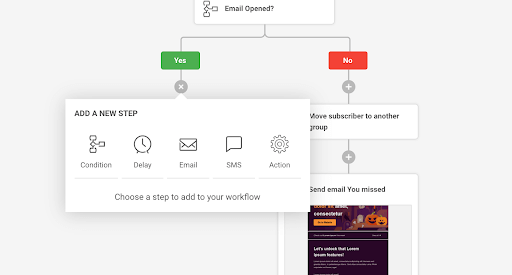B2B lead generation can be challenging. It involves a highly trained, expensive workforce, longer sales cycles, and higher ticket prices.
Therefore, a lead generation approach that simply maximizes the number of leads while hoping to convert a fraction of them has no meaning and is only doomed for failure. And failure comes at a high cost in the B2B business segment.
Enter your superhero (without a cape)—Account-Based Marketing or ABM.
In this Account-Based Marketing 101, learn how it can help you vastly improve the profitability of your lead generation efforts and provide you with better quality prospects who are ready to buy faster than you can say “B2B”.
What is Account Based Marketing (ABM)?
Account-based marketing is a highly targeted approach to B2B marketing in which we aim to target and convert those clients and accounts that are the most likely to buy first.
Your sales team always has a better understanding of your target customer. While marketing, on the other hand, is tasked with the responsibility of attracting and pulling prospects that are more likely to become such customers.
A simple definition: Account-based marketing is the process of getting both sales and marketing to work together on targeting and closing best-fit accounts instead of working in silos.
Why an Account Based Marketing Model?
The problems with a traditional approach to lead generation to B2B business include:
- Emphasis on quantity over quality
- Non-optimized “Spray and Pray” approach that does not sit well with a complex long sales cycle setup involving multiple decision-makers
- Expensive sales rep time often gets wasted on low-quality prospecting
- Lesser conversations, lesser conversions
ABM Relevant Statistics
Let’s talk stats.
Average Conversion Rate from Lead to Opportunity, i.e., from Marketing Qualified Lead (MQL) to Sales Qualified Lead (SQL), was just 13%. (Implisit)
(That is only about 13 out of every 100 leads are deemed “worthy” by sales reps.)
Marketing revenue increased by 208% for companies with aligned sales and marketing teams. (Hubspot)
97% of marketers said ABM had a higher ROI than other marketing tactics. (Alterra Group)
Account-based marketing solves this problem of misalignment between marketing and sales teams.
10 Benefits of Account Based Marketing
- Higher effectiveness of campaigns due to increased personalization.
- Greater engagement due to higher relevance.
- Align sales with marketing, leading to optimum utilization of expensive sales rep time and marketing budget.
- Measurable ROI.
- Improved marketing ROI.
- Drive increased revenue that’s also attributable.
- Get more conversions and qualified leads.
- Streamline and shorten the sales cycle because now marketing generates better quality leads to convert better sales.
- Deliver highly personalized & consistent customer experiences.
- Expand business through better navigating existing account relationships.
Examples of Account Based Marketing Tactics
Account based marketing (ABM) will run differently by different organizations. Some of the more prominent tactics & ideas are as under:
Events
Whether offline or virtual, events have always been a big way to do business in the B2B sector. An ABM strategy makes events a very targeted occurrence where you can aspire to engage with priority contacts over customized or personalized product or service experiences.
In this case, the typical metrics, for example, the number of registrations, total footfall, or even the total number of leads, mean very little. In this case, our objectives are different. We seek to meet our revenue goals from our ABM accounts by doing deals.
Some examples of doing this right are using hosting LIVE supplier or vendor roadshows. You can also consider virtual invite-only webinars, conferences, workshops, networking events, product launch events, and award nights, to name a few.
When doing it the ABM way, the key difference is that everything would be highly targeted, personalized, and kept relevant to that client or segment of the industry.
Google Ads
Although it’s popularly and to a certain extent rightly believed that LinkedIn is best when you are looking to target B2B businesses, Google ads management (also called Pay Per Click or PPC advertising) is a great way to get started with your ABM campaign as well.
But, again, the goal is to serve personalized ads to specific companies or decision-makers.
Top-of-the-funnel ads can spread awareness and bring traffic to your site. Once a B2B business visitor visits your website, this could be a double bonus!
For one, you could place a pixel on your website or landing page and then retarget them over multiple platforms.
Moreover, using advanced ABM CRM solutions and their intelligence, you can reverse trace the IP addresses of the visitors and estimate the company or business they appear to be visiting you from. Also, the query they were searching for, pages visited, interaction with your content, etc.
The difference between a standard Google ads campaign and one that you run as part of your ABM is that the keyword research you will end up performing will be more company-specific.
For example, “Does anyone at our target company search for this?” This, in turn, will come from a deeper understanding of their ICP, current martech stack, and business pain points.
Email Campaigns
Using an email finder tool, finding out the business email addresses of important contacts or decision-makers becomes relatively easy. A cold email, when done right, could be almost a perfect way to start.
Your cold emails should have a solid benefit-driven copy and include an automated sequence of follow-up messages.
Once the conversation starts, it could be an excellent opportunity to move this email conversation into a consultation call for a FREE trial or something similar.
Emails are also a great way to nurture your prospects with valuable content. If you are looking for a cost-effective solution to send high-converting emails that provide excellent business ROI, consider setting up an account with Sender.
Besides taking care of simple and complex automation sequences, it also supports a unified dashboard for sending emails and SMS messaging from a single interface.
What’s more, the FREE Forever plan allows you to send out up to 15,000 emails every month to up to 2,500 contacts on your list, without any restrictions on features and tools.

Best Practices to Implement Account Based Marketing
Account-based marketing is not about tips and tricks or growth hacks. Instead, all account-based marketing initiatives are part of a broad change framework guided by principles within which sales and marketing both will work.
Check out the below steps that underline the core methodology.
Socialize ABM Internally, Organization-wide
Getting rid of any internal objections and resistance is a must before planning out an ABM strategy for penetration. Outreach departments will be affected by the change and start a dialogue where their concerns are addressed.
They might be able to see the bigger picture and overall benefits of implementing ABM. But they’re not sure of their specific roles or activities and the specific benefits they stand to gain.
For example, sales may want to know how ABM could help them close deals faster.
This is also a great time establishing responsibilities and a team structure, so everyone knows who’s supposed to do what and how much.
Introspect and Research to Construct ICP
Create an Ideal Customer Profile (ICP) document that details what type of business clients your company’s products and services will be an excellent fit for.
The ICP will document any relevant information about the business client, such as firmographics (company size, revenue, location, and industry). And technographic (marketing tech stack and any competing products in use out there already).
Define Your High Value Targets
Use your ICP data and market research to zero in on businesses. They might be looking for the exact solution you have. It’s crucial for both marketing and sales to be sitting together. For both the ICP creation and discovering and defining high-value target accounts.
Identify the Key Contacts at Target
According to KnowledgeTree, approximately 7 to 20 people make up the average B2B buying committee. So you have your task cut out here. Nonetheless, you will need to discover the best person to open this dialogue with.
Research Optimal Marketing Channels That Your Target Account Contacts Regularly Uses
Once you know these marketing channels (web, email, social media), align your content and messaging with the target business account.
Execute Your Outreach Campaigns
Execute swiftly, whether cold messaging over email or highly personalized social media. It’s always a good idea to have an entire sequence planned upfront. Including a list of possible objections and followups, and to have this as automated as possible.
Lead Scoring and Hand Over
Implement lead scoring wherever possible and have marketing hand over all leads that cross a threshold, over to sales which can then try and convert them to paid customers.
Of course, you can do this handover manually without the ability to score your leads. Simply define touchpoints manually.
For example, an account manager for a SaaS software platform who’s just done with a demo to the target account can invite the sales team to share comprehensive pricing info via email next.
Measure Your ABM Campaign Statistics and Also Test Regularly
Ultimately your data should convince you that your ABM approach is headed in the right direction. You probably already understand how vital analytics and reporting are here.
Give it time but also test regularly. Once you have this down to a repeatable formula, you can quickly scale the ABM campaign based on organizational aspirations and business revenue targets.
Account-based Marketing In a Nutshell
The objective of all Account-Based Marketing is, quite simply, to treat each target account as a market of one. All of your communication, messaging, and presentation should be oriented towards engaging and winning over one business account.
Account-based marketing is best explained by this metaphor— instead of casting a broad net, you hang out a fishing rod in the right place with the correct type of bait.
Using ABM strategies can improve marketing ROI, drive revenue attribution, generate more leads, convert them into sales, and align marketing and sales efforts. All in all, more success stories for your business are possible once you start walking the ABM way.
Also read:
- What is Omnichannel Marketing? 4 Great Strategies
- What is Targeted Marketing? Definition, Strategies & Examples
Content Contributor – Santosh Balakrishnan




